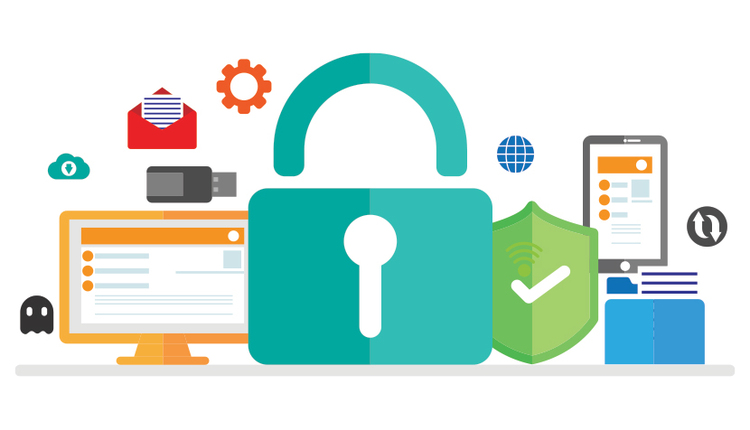
COVID-19 has changed the way we work, perhaps forever. As legal departments and law firms rushed to transition as much of their teams to work from home as possible, many found their infrastructure was not yet up to the job, especially with such little notice – and at such scale.
That said, there are areas where the industry was particularly well prepared. The idea of a remote distributed workforce is not new. Many eDiscovery services providers have been operating in remote environments for some time, taking data storage, processing, analytics, and review to the cloud, or even performing remote forensic data collections.
However, no matter how prepared an organization was, the change to remote work had to be made.
An Inflection Point
External factors associated with COVID-19 forcing widespread operational changes, may eventually come to be seen as an inflection point for legal departments and law firms, speeding the adoption of working remotely – or even conducting their entire business remotely. Activities such as remote document review – that seemed like “nice-to-haves” with few actually willing to invest in, are quickly becoming the only way to do this work while helping keep employees safe. Whether these changes are temporary or here to stay as a new world of work remains to be seen. In any case, the operational benefits in terms of reduced cost and increased efficiencies are not going unnoticed. And this prolonged, forced “trial period” is helping work out the kinks – and prove these approaches’ efficacy.
The Way Things Were Heading
Long before COVID-19, the gradual migration away from the traditional eDiscovery services provider office location began, pushed along by tools that support remote work and collaboration, as well as technologies that support remote eDiscovery operations. At the center of much of this migration has been scalable and accessible cloud adoption.
The simple truth is that even though professionals are increasingly dispersed, data is increasingly centralized. It is much more efficient and effective to collect, process, host, review, and produce ESI in a secured cloud environment, unconstrained by the physical location of either the data or those who need to work with it.
Why the Shift to the Cloud?
You may understand why remote eDiscovery is taking off right now, but why is it quite likely here to stay?
Benefits of remote eDiscovery management in the cloud include:
• A lower-touch process (less movement, fewer discoverable copies, and enhanced control)
• Removal of geographical restrictions based on workforce
• Scalability (near-instant provisioning and decommissioning)
• Exceedingly secured environment
• Cost-effective (pay for consumption and the resultant shift from CapEx to OpEx)
In our own business, Ricoh eDiscovery, the transition to remote work began some time ago. As of 2007, more than 98% of data collections performed by Ricoh were done onsite. Today, that number is much less than 5% because of the significant advancement of remote collection technologies, such as Remlox™. Just over six years ago, Ricoh proposed moving its legal document hosting clients to the cloud. At the time, less than 0.05% declined to move. The vast majority were on the right side of history, and they are better prepared for the current moment because of it.
Where eDiscovery’s Headed Next
The exact shape of the new world of work emerging from this pandemic – with companies fully embracing a remote workforce, or not – remains to be seen. However, the legal technology services industry has been on a steady path to an increasingly distributed workforce that remotely manages all phases of the discovery process. So it is perhaps more accurate to call current circumstances an accelerant, rather than a disruption.
But what about document review? Traditionally, document review has always demanded corralling attorneys into highly secured, tightly managed locations. For some legal professionals, work-from-home document review seems a bridge too far – the protocols could be a pain, but they were there for a reason. However, document review still has to happen, and nobody wants to subject employees to undue health risks.
Cutting the Gordian Knot: Remote Document Review
As many reading this will know, document review processes saw major change long before COVID-19. Document review, because of scale and consequent cost, previously shifted from law firm associates to review centers. These centers are typically staffed by contract attorneys. These contract attorneys increasingly chose to work remotely to take advantage of low-cost geographies (i.e., wage arbitrage). Even with this shift, the premise of corralling reviewers, project managers, and specialists in a central location remained unchanged.
Until you suddenly couldn’t have that many people in the same room. Document review is, at least for now, a decentralized, work-from-home affair. It has gone from far-flung fantasy to absolute necessity.
But will this change last?
Security has always been a top-of-mind concern in document review. Any analysis of a remote review workforce must take this into account. The same stringent security protocols used for review center reviews can and should be enforced for distributed review – just without the need for securing a physical location. Aspects to consider:
• Reviewers use properly set up company assets, not personal computers
• Desktop virtualization
• Data encryption in transit and at rest
• Secured connectivity utilizing AES 256-bit encryption
• Deploying technology that prevents the ability to screen scrape, download, print, or use externally attached devices
• Using multifactor authentication protocols (MFA) such as FIDO (Fast IDentity Online)
The only thing missing from this list that old hands at document review may notice, is confiscation of the reviewers’ mobile devices before entering the review room. Then again, review facilities typically do not use metal detectors, or check for micro devices like cameras hidden in glasses, so perhaps that’s less of a disadvantage for remote review than one might think.
We’ve talked about security questions, but now let’s look at the other side of this issue: efficiency.
Remote review has definitive financial benefits to provider and client alike. Even more exciting, embracing remote review opens up access to attorneys with industry-specific expertise regardless of geography. You can work to bring in the best-suited, most qualified reviewers from anywhere, without having to worry about their travel and lodging costs.
Additionally, I can say from experience, that the efficiencies of remote review aren’t purely academic. At Ricoh, we’ve found that efficiency has increased approximately 9% with at-home review. Better breaks, lack of commute, greater flexibilities, and strong remote-based support are significant contributing factors.
And given the better working conditions, contractor attorneys are amendable to more competitive pay rates. Even one or two dollars fewer per hour per reviewer adds up quickly to large cost reductions for clients.
In conclusion, it’s entirely possible that after COVID-19, the industry will split into two camps: those willing to keep working in this fashion, and those that are not. It may be that law firms and legal departments that allow service providers to continue to operate in this fashion will see a competitive advantage over those who do not. What has been mandated as necessity now, may prove to be the mother of innovation. We shall see.











